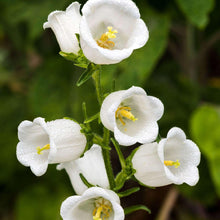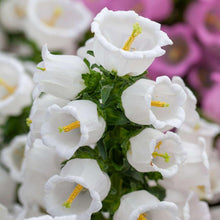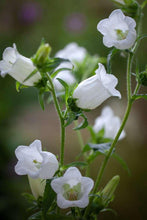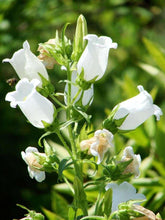
This listing refers to the sale of seeds. Each packet contains 25 seeds.
Campanula medium, commonly called Canterbury Bells, are beautiful, trendy, and an excellent cut flower with a long vase life. They symbolize gratitude and faithfulness. In gardens, they are best grown en masse in borders or among shrubs. It prefers cool or warm zones and is native to mid and southern Europe; not suitable for the tropics or hot, dry regions. It thrives in lightly shaded to sunny locations in well-drained soil. Keep well watered.
The Champion variety was bred to be productive yearlong. It blooms 8-12 months per year, depending on your area, and comes into maturity extremely quickly (15 weeks). The "Champion" combines low heat requirements and a quick growth period as well as upright-facing flowers. It is an ideal flower for Valentine’s Day, Easter and Mother’s Day.









